2019 ASA Board of Directors Candidates
Running for President-Elect
Jeri Mulrow
Principal Deputy Director, Bureau of Justice Statistics, Department of Justice
Data are everywhere, and the amount of data continues to grow daily. This presents both opportunities and challenges for us. How do we ensure the appropriate use and understanding of data?I joined the ASA as a graduate student and am passionate about our profession. It is a fun, challenging, and rewarding profession, and it provides us great opportunities to contribute to a better society and a better world. I am very honored and very excited to be a candidate for president of the ASA at this exciting time.
I am in the federal government, and I see firsthand the need for policies to be based on appropriate statistics using relevant, timely, high-quality data. These policies impact our world, our society, and our daily lives. We must play a role in the discussions about the statistics, the data and evidence, the uses of the data and evidence, and the understanding of the data and evidence used to set policies. These discussions can be with your students, your colleagues, your friends, or your family.
My experiences and observations led me to think about three areas of continuing need, which I would want to focus on as ASA president and [which] fit well within the realm of the ASA and our strategic plan. The first is a need for excellent communication and leadership skills among our members. The second is a need for statistical education to meet the changing data environment and to address complex problems facing society. The third is a need for statistical literacy of all our citizens.
Communication and leadership skills. Leadership goes hand-in-hand with communication. Good leaders are good communicators. It is crucial for us to continue to improve our communication with others outside our profession. We also need the skills to be able to be a leader at all different levels of our organizations. These skills will help us ensure the appropriate uses and understanding of statistics and data by others.
Statistical education. To take full advantage of the opportunities presented by the changing data environment and to address complex problems facing society, we must have a focus on statistical education. Academic institutions of higher education are already responding to these changes for their undergraduate and graduate students by developing new courses and forming collaborations with other departments. For those of us who have already graduated, we also must continue to hone and improve our data science skills.
Statistical literacy. Statistically literate citizens are better able to judge decisions and policies if they have a good understanding of the underlying statistics, data, and evidence used in making those decisions and policies. The statistical community can contribute greatly in this area, leading to informed policies for our world and our society.
Our contributions in many areas have been and continue to be important! I am excited for our profession and about our opportunities. If elected, I will work toward meeting these needs and to hearing more from all of you about what more we can and should be doing.
Wendy Martinez
Director, Mathematical Statistics Research Center, Office of Survey Methods Research, Bureau of Labor Statistics
In preparing my statement, I realized the theme for my candidacy can be expressed as “building bridges to enlarge the ASA big tent for statistics and data science.” The ASA has made great strides to increase partnerships with international statistical societies and professional groups like the AAAS. With your support, we can do more to enhance the diversity of the ASA, increase the visibility of statistics, and ensure the future of our profession.
Support for educators: I taught statistics at the undergraduate level, and I understand the need to ensure students entering college are better prepared. It is imperative we continue to promote statistics at K–12 levels. The ASA hired a K–12 statistical ambassador in 2016, and I will work with her to establish an advisory group for K–12 faculty, so teachers can tell us how to help, and we can make it happen.
The ASA has links to resources for K–12, including the Census at School project. Some US agencies (Bureau of Labor Statistics) have websites with materials focused on K–12 education. I will work with the ASA Board to reach out to other agencies and encourage them to provide relevant resources.
Support for students: More students of color, women, LGBT students, etc. are going to college, and many are becoming interested in statistics! As educators and role models, we should be aware that how we teach them and the support we give might need to change, especially for first-generation students who may have fewer resources and support. I will establish a high-visibility initiative to address this issue.
The student experience at JSM builds the future foundation for the ASA. The activities we provide for them shape their impressions and interests in statistics as a profession. I will work with ASA staff and sections to provide more opportunities and better experiences for undergraduate and graduate students at the JSM. I will engage ASA leaders to establish and maintain a student and early-career travel fund. This will provide financial assistance for students to participate in JSM and other ASA activities.
Building confidence in official statistics: The data gathered by all levels of government are a public resource. The year 2020 will be especially important for US official statistics because of the census. Our statistical voice needs to be heard at the table. Building on the campaign ASA has started (Count on Stats), a major focus of my term will be to strengthen this position.
Of particular note, we should expand the application of statistical methods in all areas of defense and national security, including military personnel health, equipment testing, and data analysis.
Promoting innovation: The creation of partnerships between the ASA, academia, industry, and government to generate innovative research questions and solutions to benefit society and human welfare is critical. Data challenges are serving to benefit many other fields. Building on activities of some ASA sections that have sponsored data challenges, I will engage with other sections to establish an annual ASA Data Challenge Expo.
Surveying our members’ needs: While the ASA Board and staff provide leadership and support, it is the members who make things happen. I want the goals of all our members, including our international colleagues, to be shared. So, I will be reaching out to you as president-elect to determine what is important to our community.
Someone asked me, “Why do you support the ASA?” I said we need to do things we are passionate about when ‘our hearts sing.’ This is why I am so excited about the opportunity to support the ASA as president—because it makes my heart sing to help shape our future! Visit my website and learn more about me and my hopes for our future.
Running for Vice President
Richard De Veaux
Department of Mathematics and Statistics, Williams College
Could Dickens have been talking about being a statistician in 2018 when he wrote:
“It was the best of times, it was the worst of times, it was the age of wisdom, it was the age of foolishness, it was the epoch of belief, it was the epoch of incredulity, it was the season of Light, it was the season of Darkness, it was the spring of hope, it was the winter of despair”?
Ok, probably not. But it is the best of times for us—we have more job opportunities as statisticians now than at any point in my lifetime. And we’ve all heard the forecasts that we’ll need hundreds of thousands more data-savvy analysts in the next decades. But it may also seem the worst of times. Why? Because, these days, everyone thinks they’re a statistician. John Tukey was once quoted as saying that he loved statistics because we got to play in “everyone’s backyard.” Now it seems everyone wants to play in ours. Data scientists, computer scientists, machine learners—everyone is doing data analysis—and some (although clearly not all) are doing it very, very well.As the ASA representative to the IEEE Data Science conference the past two years, I’ve heard many excellent talks on statistics, data analysis, and how the methods solved important problems in science and industry. Unfortunately, I was one of only two statisticians at the conference. Some of the analyses checked the source of the data, worried about its integrity, and were careful with their inferences—all things that lie at the core of our profession. But others focused only on the power and speed of the algorithm, with little regard to the quality of the data, or even of the questions being asked.
So, what keeps me up at night? Like many of us, I worry our profession is growing out of touch with the demands of a data-driven world. As an educator, I share the worry that our statistics courses are becoming irrelevant, as well. For decades, we’ve seen many other disciplines teaching their own versions of statistics. As that continues and data science becomes the source for their courses, will students still be taught to ask about the pedigree of the data, or will it be enough just to know which algorithm won the latest Kaggle contest?
Will we be overwhelmed by the data science tide, or can we guide data science with statistical insight? And what would be the role of the ASA in doing so? Given the immense talent and diversity of its members, I’m convinced the ASA can, and should, be a central force in forging the role of statistics in data science. I would be honored to be given the chance to help.
A statistics software executive was recently quoted as saying, “Nothing that I’ve learned in the last 30 years of working in this industry is relevant today.” That may be a bit dramatic, but I know how he feels! As I think about what to teach students in an introductory statistics course in 2018, much of what I learned and much of what I’ve taught seems irrelevant. It’s a fantastic time to be a statistician, but it’s not without its challenges.
I am deeply honored to be a candidate for vice president of the ASA. I’ve been involved in the ASA for many years in many different roles—program chair for JSM in Atlanta in 2001, program chair for SPES, COSGB representative to the board, founding member and later chair of the Section on Statistical Learning and Data Science. With your support and input, we can work together to find answers to some of the questions I’ve posed and help position the ASA as an even stronger force and advocate for statistics and statisticians.
Thomas Short
Department of Mathematics, West Chester University of Pennsylvania
The themes of our Strategic Plan—enhancing the diversity and breadth of our association, increasing the visibility of our profession, and ensuring the future of our profession—directly connect with my ASA experience and inspire me to lead and support initiatives. Reflecting upon my service to the ASA—in chapters, sections, committees, journals, and as a board member—leads me to four pathways through which I will exemplify these themes: Celebration; Culture; Collaboration; and Challenges.
Celebration
It’s the best time ever to be a statistician, and we have so much to celebrate! The ASA leads efforts to fund the new International Prize in Statistics, to support DataFest for undergraduate students, and to continue K–12 student competitions. The Conference on Statistical Practice, the Women in Statistics and Data Science Conference, and credentials such as our PStat® and GStat accreditations benefit members and increase visibility. I recently proposed an Awards and Recognition Committee for the Philadelphia Chapter to celebrate the accomplishments of members in our region, and, if elected, I will continue to highlight the accomplishments of our members and the activities of our organization.
Culture
I’m impressed by the variability in cultures between chapters, sections, and committees. People are one source of variability, but so are the habits and traditions within each entity. Communication and awareness are the cornerstones of sharing culture among entities, and such sharing sparks activity and creates opportunities for growth. For example, our advocacy has impacted the culture of statistics within governments around the world. We express our culture to others through thoughtful and timely statements endorsed by our board. If elected, I will continue to facilitate communication and awareness, helping entities to replicate, expand, and refine approaches that have worked for others.
Collaboration
With resources and experience on our side, the ASA has already assumed a leadership role through our “Big Tent” vision. We can work to ensure the future of our profession by collaborating with existing and emerging organizations. I recently facilitated an event co-organized by the Cleveland Chapter of the ASA and the Cleveland R Meetup Group. Now that I’ve moved to Philadelphia, I’ve reconnected with a local teachers group to promote an ASA presence in schools. We must continue to strive to collaborate with teachers, advisers, parents, and students to highlight pathways that lead to careers in statistics and related disciplines; the ThisIsStatistics website is one impactful resource the ASA has developed for this purpose. I will continue to work to collaborate locally, and, if elected, I will work to develop shared initiatives that benefit our profession beyond the local level.
Challenges
As statisticians, we notice that data science, analytics, and big data analysis are blossoming, and we wonder how our identities will evolve. We consider rebranding and repositioning to share our experience in culture and communication and our tradition of celebrating achievements and diversity. We extend our invitation to collaborate with students at all levels and both new and experienced practitioners. We face challenges of identifying funding mechanisms and sources in order to maintain support for current initiatives and projects and to expand in creative and timely directions. If elected, I will apply my accumulated experience in a diversity of roles in service of the ASA to strategize solutions to our challenges.
Running for Council of Sections Governing Board Representative to the Board of Directors
Steve Gulyas
Health Care Value Data Analytics, Blue Cross Blue Shield of Michigan
The field of statistics is in a golden age. Data abounds, statistics software is answering centuries-old questions that could only previously be framed in mathematical equations, and more students than ever are entering the discipline. The ASA, with its more than 175 years of experience, is recognized as the flagship organization for our profession. JSM has been breaking attendance records over the past few years, and the program continues to grow. And yet, threats to the ASA exist. Membership is not fully reflecting the youth movement into our field, revenue streams for journals are changing, and the ASA is wrestling with an identity crisis with respect to data science. These opportunities and challenges excite me when I consider the prospect of serving on the ASA’s Board of Directors (BOD).The duties of a Council of Sections (COS) BOD representative include speaking for the COS on the BOD—including budget issues impacting COS, being a liaison between the BOD and COS Governing Board (COSGB) and COS, serving on the ASA Committee on Meetings (COM), and serving as part of the Strategic Planning Committee. Having served six years on the COS, including three years recently as a member of COSGB, I have developed a broad understanding of the issues sections face. Some of these include growing section membership, managing the growth of new sections, identifying an expanded role for interest groups, and cross-pollinating sections’ ideas such as distance learning. My prior treasurer experience from the largest section treasury in the ASA would be helpful to inform BOD financial issues. I also have recent experience with COM through a recent JSM session reallocation exercise.
The ASA’s Strategic Plan currently focuses on three major areas: enhancing the diversity and breadth of our association; increasing the visibility of our profession; and ensuring the future of our profession. Within these areas, I believe public awareness and education are especially critical today. The ASA needs to educate the general population about statistics, sensitizing them to when misleading inferences are being made. When the public is confused about statistics, the ASA should be an independent and unbiased voice to provide technical guidance and clarify interpretation. Further, I believe the ASA should play a leading role in defending science and exposing where only naked beliefs exist.
I am proud that the ASA BOD has stepped into public debate about many important issues recently. Given the number of ASA members in the government sector and the breadth of public policy dependent on the work of federal statisticians, I view the Count on Stats campaign as essential in defending valuable work for our country. White papers such as the ASA’s statement on p-values are important to distinguish the ASA as the authority on academic statistical issues. The ASA’s opinions on gerrymandering, climate change, and the census are important to be heard.
I believe the outreach of the ASA into the international community has been wise, and I support further expansion. Many domestic organizations have statisticians working in foreign countries, and having an ASA presence abroad helps strengthen the ASA’s position as a world leader and professional resource to our members. The ASA’s leadership also permits many to seek statistics careers here.
I believe many individuals choose statistics as a career because they like to play in others’ sandboxes. The ASA’s sections naturally provide this cross-functional opportunity, and the ASA should leverage them for further growth. I am humbled to have been asked to run as one of its representatives to the ASA BOD. With your support, I would welcome the opportunity to serve our profession at its highest level.
Mark Glickman
Senior Lecturer and Director of Sports Analytics Lab, Department of Statistics, Harvard University; Senior Statistician, Center for Healthcare Organization and Implementation Research, a Veterans Administration Center of Innovation
It is my pleasure to be considered for a position on the ASA Board of Directors as one of the Council of Sections’ Governing Board representatives. I have consulted over my career with industry collaborators on a wide variety of applied statistical problems. My background in academia, government, and industry has provided me with a diverse set of experiences that make me well-suited for the board of directors position. The greatest ongoing challenge to the ASA is to create initiatives and opportunities that respond to an ever-changing landscape of our memberships’ professional interests, set the standards for the delivery of quality statistical education, and increase the visibility of statistics in society. The ASA has demonstrated superb leadership in these areas, and I see my role on the board of directors as continuing and enhancing this tradition of excellence.ThisIsStatistics, launched in 2014, is an outstanding example of the ASA’s ongoing initiative to communicate on a national level the importance of statistics in society and the diversity of applications that statisticians confront.
The response to the quick emergence of data science as a closely related discipline has been equally strong. Since 2015, the ASA has formally acknowledged the importance of having a role in data science in several ways. These include sponsoring conferences with substantial data science presence and considering the ASA’s creation of data science accreditation.
As a faculty member who regularly co-teaches a data science course in tandem with computer science colleagues and who has been part of the data science initiative at Harvard, I can help provide leadership in navigating the data science revolution. In its current form, the practice of data science is much broader than the exposure a typical statistician receives. Given the evolving nature of data science, the ASA needs to remain nimble in continuing to create opportunities for its members and to educate and communicate to consumers of data science the role of statistics in the data science process.
We are living in unusual times, and we face new challenges the ASA needs to address. In my view, statisticians need to become the discussion leaders in support of evidenced-based science and policy in our society. This past year, we have witnessed the ascendancy of “alternative facts” and a new leadership in Washington that seems ignorant [of]—if not downright hostile toward—principled statistical argument.
One recent positive step taken by the ASA is the proposed development of a communication initiative to support awareness of the federal statistical system. The initiative, “Count on Stats,” will be designed to educate society and stakeholders about the work performed by statistical agencies and the importance of their work.
The ASA should continue to be an influence on important national issues. For example, the ASA intends to issue a joint statement with the AMS [American Mathematical Society] to address partisan gerrymandering, advocating for fair districting in advance of the 2020 national elections. The ASA’s ability to put out statements about critical societal issues on the national stage and to educate stakeholders about the consequences of proper statistical thinking is a potent combination.
Thank you for your consideration. It would be my privilege to serve on the ASA Board of Directors and to help improve opportunities for our ASA membership, as well as improve communication about evidenced-based science and policy in these critical times.
Running for Council of Chapters Governing Board Representative to the Board of Directors, Region 2
Ananda Jayawardhana
Pittsburg State University
I would be honored to serve as a member of the board of directors representing the Council of Chapters (COC). I have served in all the chapter officer positions in our chapter, as the secretary/treasurer of the COC for six years, and recently as the chair of the COC. I believe 15 years of chapter-related service has prepared me well to understand the diverse needs of the chapters.Challenges are changing for the ASA, as well as the chapters. Declining interest in chapters among the ASA members is one such issue unique to chapters. I will work with the COC Governing Board to find ways to persuade the value of the chapters to membership. Converting student members to full-time ASA members and chapter members is another issue that needs attention.
Diversity is a very close subject to my heart. I have served on a committee to organize an annual conference on diversity among the state universities in Kansas since 2007 and have co-chaired the conference twice. I would work on improving the diversity in our profession. I believe this should start from K–12 and undergraduate classes. As an educator, I am working to recruit students to our profession by visiting schools, conducting an annual poster competition, and recruiting students from my undergraduate classes. I would promote such activities, including career fairs among our chapters, and welcome new ideas from chapters. I would be a great supporter of the ASA’s education outreach activities.
I have met with local politicians and attended the meetings with our representatives at Capitol Hill to promote our profession. I will wholeheartedly participate to preserve the integrity and enhance the visibility of our profession. I trust the competence of our diverse membership, and I am confident we can find answers for the challenges ahead of us.
I would like to propose chapter-driven regional meetings to replicate the activities of the Conference on Statistical Practice. There are lot of statistical practitioners and data scientists in our chapters’ catchment area who never participate in our chapter activities. We can give leadership to organize local opportunities to advance their careers. This kind of outreach could increase the chapter membership, if not the ASA membership.
As an isolated statistician in a mathematics department, I had to find my own way to success as an academic. I would like to find out the feasibility of starting a program to help starting statistics faculty members. Though this is not a chapter-related goal directly, being a member of the board of directors will provide me with the opportunity officially or unofficially to discuss the idea with the highest body of the organization.
Over the years, I have seen the natural life of chapters. COC has rejuvenated some chapters from the brink of dissolution and helped some chapters to start new chapters or merge. As the COC representative to the board of directors, I will attend to the needs of the chapters, support chapters that participate in the International Science and Engineering Fair, and advocate to continue the traveling course.
The ASA has been a very important part of my professional and private life and I am honored and happy to serve as a member of the board of directors if you provide me the opportunity.
Anamaria Kazanis
ASKSTATS Consulting, LLC
It is my privilege to be a candidate to represent the Council of Chapters Governing Board (COCGB) on the ASA Board of Directors. I joined the ASA as a graduate student in the belief that there was more to statistics than just a degree. I was not disappointed. The community spirit at the Joint Statistical Meetings (JSM) inspired me to put my name as candidate to the Executive Committee of the Statistical Consulting Section. I was elected and served for three years. When I decided to devote more time to energizing the Ann Arbor Chapter, I was elected chapter representative, vice president, and president. I was appointed communications officer and then elected District 3 vice chair of the COCGB. It is an inspiration to witness the level of commitment from all elected and appointed officers to the mission of the ASA.Statistics, data science. … Yes, there is more than just a degree! Statisticians already know statistics and data science are required for success in every industry. Meanwhile, the emergence of data science is motivating public use of statistical terminology and recognition of the role of statistics in today’s world. The ASA is perfectly positioned to increase visibility of the profession and establish itself as the big tent for statistics through education initiatives reaching into classrooms as children begin learning the scientific method, as well as advising and impacting professionals who are designing future infrastructures. These initiatives include local chapter outreach to science fairs; career days; and professional-level training available to statisticians, nonstatisticians, and everyone in between. As the District 3 vice chair, I have established lines of communication with each chapter in my district. My role has been to facilitate problem solving through in-depth understanding of chapter operations. In the role of the COCGB representative to the board, I will be able to bring this understanding and experience, relaying COCGB initiatives and facilitating high-level problem solving to achieve national results through regional actions. The ASA emphasizes a local, regional, and national commitment to education initiatives in pursuit of its two missions that I believe in with all my heart and will support in my new role.
ASA Election Candidates List
Council of Chapters Governing Board
Chair-Elect
Mary Kwasny
Northwestern University
David Han
The University of Texas at San Antonio
District 3 Vice Chair
Mac Turner
Research HealthCore
Ruth Cassidy
University of Michigan Health System
District 4 Vice Chair
Tracy Morris
University of Central Oklahoma
Jo A. Wick
University of Kansas Medical Center
Council of Sections Governing Board
Chair-Elect
David Edwards
Virginia Commonwealth University
Ofer Harel
University of Connecticut
Vice Chair
Tony An
SAS Institute Inc.
Alyson Wilson
North Carolina State University
Section on Bayesian Statistical Sciences
Chair-Elect
Kate Calder
The Ohio State University
Marina Vannucci
Rice University
Program Chair-Elect
Surya Tokdar
Duke University
Sanvesh Srivastava
The University of Iowa
Secretary/Treasurer
Yanxun Xu
The Johns Hopkins University
Antonio Linero
Florida State University
Council of Sections Representative
Garritt Page
Brigham Young University
Ying Yuan
University of Texas MD Anderson Cancer Center Biometrics Section
Biometrics Section
Chair-Elect
Sherri Rose
Harvard Medical School
Sharon Xie
University of Pennsylvania School of Medicine
Secretary/Treasurer
Michael Wu
Fred Hutchinson Cancer Research Center
Elizabeth Ogburn
The Johns Hopkins University
Council of Sections Representative
Jennifer Sinnott
The Ohio State University
Page Moore
University of Arkansas for Medical Sciences
Biopharmaceutical Section
Chair-Elect
Bruce Binkowitz
Shionogi Inc.
Ed Luo
PTC Therapeutics
Program Chair-Elect
Stephine Keeton
Pharmaceutical Product Development, Inc.
Anthony Lonardo
Eli Lilly and Company
Publications Officer
Forrest Williamson
Eli Lilly and Company
Yongming Qu
Eli Lilly and Company
Council of Sections Representative
Veronica Powell
QST Consultations Ltd.
Vaneeta Kaur Grover
GlaxoSmithKline
Business and Economic Statistics Section
Chair-Elect
Baoline Chen
Bureau of Economic Analysis
Adriana D. Kugler
Georgetown University
Program Chair-Elect
Mariana Saenz-Ayala
Georgia Southern University
(unopposed)
Secretary/Treasurer
Maggie R. Jones
US Census Bureau
James Livsey
US Census Bureau
Section on Statistical Computing
Chair-Elect
Jonathan Wesley Lane
Activision
John Castelloe
SAS Institute
Program Chair-Elect
Matthias Schonlau
University of Waterloo
Kary Myers
Los Alamos National Laboratory
Council of Section Representative
Lucy D’Agostino McGowan
Vanderbilt University
Abbass Sharif
University of Southern California
Section on Statistical Consulting
Chair-Elect
Manisha Desai
Stanford University
Ed Boone
Virginia Commonwealth University
Publications Officer
Joseph Rigdon
Stanford University School of Medicine
Hannah Palac
AbbVie
Council of Sections Representative
Ralph “Mac” Turner
HealthCore, Inc.
Dean Johnson
Washington State University
Executive Committee at Large
Peter Rankel
Stratus Solutions
Robyn L. Ball
Stanford University
Section on Statistical Education
Chair-Elect
Michael Posner
Villanova University
Nathan Tintle
Dordt College
Secretary/Treasurer
Matt Beckman
The Pennsylvania State University
Jennifer Broatch
Arizona State University
Members at Large
Dave Fluharty
Ivy Tech Comm. College and Allison Transmission
Beverly Wood
Embry-Riddle Aeronautical University
Jessica Chapman
St. Lawrence College
Karsten Maurer
University of Miami – Ohio
Section on Statistics and the Environment
Chair-Elect
Amanda S. Hering
Baylor University
Erin Schliep
University of Missouri
Program Chair-Elect
Ephraim M. Hanks
The Pennsylvania State University
Michael Messner
US Environmental Protection Agency
Treasurer
Kristin Broms
Neptune & Company, Inc.
Henry Scharf
Colorado State University
Section on Statistics in Epidemiology
Chair-Elect
Jing Cheng
University of California, San Francisco
Doug Landsittel
University of Pittsburgh and the Starzl Transplant Institute
Program Chair-Elect
Alisa Stephens-Shields
The University of Pennsylvania
Yingqi Zhao
Fred Hutchinson Cancer Research Center
Secretary/Treasurer
Nicole Bohme Carnegie
Montana State University
Yan Ma
The George Washington University
Section on Government Statistics
Chair-Elect
Katherine Jenny Thompson
US Census Bureau
Michael Sinclair
Mathematica Policy Research
Program Chair-Elect
Al Gottschalck
US Census Bureau
Michael Yang
NORC at the University of Chicago
Publications Officer
Jonathan Auerbach
Columbia University
Jenny Guarino
US Department of Transportation
Secretary/Treasurer
Tara Murphy
USDA National Agricultural Statistics Service
Peter Siegel
RTI International
Council of Sections Representative
Jennifer Parker
National Center for Health Statistics
Michael Davern
NORC at the University of Chicago
Section on Statistical Graphics
Chair-Elect
Isabella Ghement
Ghement Statistical Consulting Company Ltd.
(unopposed)
Program Chair-Elect
Shailaja Suryawanshi
Merck & Co., Inc.
(unopposed)
Secretary/Treasurer
Stefano Castruccio
University of Notre Dame
(unopposed)
Council of Sections Representative
Ritwik Mitra
AT&T Labs
(unopposed)
Health Policy Statistics Section
Chair-Elect
Laura Hatfield
Harvard Medical School
Frank Yoon
IBM Watson Health
Section on Statistics in Marketing
Chair-Elect
Lan Luo
University of Southern California-Marshall School of Business
(unopposed)
Program Chair-Elect
Daniel McCarthy
Emory University
(unopposed)
Secretary/Publications Officer
Seshadri Tirunillai
Bauer College of Business, University of Houston
(unopposed)
Section on Physical and Engineering Sciences
Chair-Elect
Robert B. Gramacy
Virginia Tech
Claire McKay Bowen
University of Notre Dame
Program Chair-Elect
Emily L. Kang
University of Cincinnati
Mary Frances Dorn
Los Alamos National Laboratory
Council of Sections Representative
Richard Warr
Brigham Young University
Kimberly Kaufeld
Los Alamos National Laboratory
Section on Quality and Productivity
Chair-Elect
Zhanpan Zhang
General Electric Global Research
Chris Gotwalt
JMP Division, SAS Institute
Program Chair-Elect
Ananda Jayawardhana
Pittsburg State University
Terri Henderson
Johnson & Johnson Vision
Section on Risk Analysis
Chair-Elect
John Nolan
American University
Elena Rantou
US Food and Drug Administration
Program Chair-Elect
Qian Li
US Food and Drug Administration
Stephen Chan
American University of Sharjah
Social Statistics Section
Chair-Elect
Eileen O’Brien
US Energy Information Administration
Craig Hill
RTI International
Program Chair-Elect
Chris Dick
Civis Analytics
Antje Kirchner
RTI International and University of Nebraska – Lincoln
Publications Officer
Joanna Turner
University of Minnesota
Liana Fox
US Census Bureau
Council of Sections Representative
John Finamore
National Science Foundation
Thesia Garner
Bureau of Labor Statistics
Section on Statistics in Sports
Chair-Elect
Phil Yates
DePaul University
Karl Pazdernik
Pacific Northwest National Laboratory
Program Chair-Elect
Jesse McNulty
Appoquinimink School District
Sarah Morris
Datalys Center for Sports Injury Research and Prevention, Inc.
Survey Research Methods Section
Chair-Elect
Morgan Earp
Bureau of Labor Statistics
Chris Moriarity
National Center for Health Statistics
Program Chair-Elect
Yang Cheng
US Census Bureau
(unopposed)
Treasurer
Dan Liao
RTI International
Darcy Steeg Morris
US Census Bureau
Publications Officer
Steven Pedlow
NORC at the University of Chicago
Dhuly Chowdhury
RTI International
Education Officer
Zach Seeskin
NORC at the University of Chicago
James Wagner
University of Michigan
Council of Sections Representative
Julia Soulakova
University of Central Florida
Bo Lu
The Ohio State University
Teaching of Statistics in the Health Sciences Section
Chair-Elect
Laila Poisson
Henry Ford Health System
John Gatta
Northwestern University
Council of Sections Representative
Constantine Daskalakis
Thomas Jefferson University
Jose-Miguel Yamal
The University of Texas Health Sciences Center School of Public Health
Section on Nonparametric Statistics
Chair-Elect
Runze Li
Pennsylvania State University
Jeff Racine
McMaster University
Program Chair-Elect
Yanyuan Ma
The Pennsylvania State University
Alexander Aue
University of California, Davis
Treasurer
Ping-Shou Zhong
Michigan State University
Jelena Bradic
University of California, San Diego
Council of Sections Representative
Aurore Delaigle
University of Melbourne
Hao Zhang
Purdue University
Statistics in Defense and National Security Section
Chair-Elect
Michael Porter
University of Alabama
Douglas Ray
US Army ARDEC – Picatinny Arsenal
Program Chair-Elect
Kassie Fronczyk
Karl Pazdernik
Pacific Northwest National Laboratory
Publications Officer
Davina Durgana
World Learning School of International Training
Kelly Townsend
The Johns Hopkins University Applied Physics Laboratory
Council of Sections Representative
Kyle Caudle
South Dakota School of Mines & Technology
Joe Warfield
The Johns Hopkins University Applied Physics Laboratory
Section for Statistical Programmers and Analysts
Chair-Elect
Vipin Arora
Eli Lilly and Company
Amy Rosen
GCE Solutions
Program Chair-Elect
Navneet Hakhu
Axio Research
Cindy Lee
Eli Lilly and Company
Council of Sections Representative
Avinash Reddy Pati
Astellas Pharma Inc.
Ben Joseph Barnard
University of South Alabama
Section on Statistical Learning and Data Science
Chair-Elect
Yuanjia Wang
Columbia University
Helen Zhang
University of Arizona
Program Chair-Elect
Adam Rothman
University Of Minnesota
Hongyu Miao
University of Texas Health Science Center at Houston
Council of Sections Representative
Xiaoming Huo
Georgia Institute of Technology
Xiao Wang
Purdue University
Section on Statistics in Imaging
Chair-Elect
Anuj Srivastava
Florida State University
Dan Rowe
Marquette University
Program Chair-Elect
Linglong Kong
University of Alberta
Robert Krafty
University of Pittsburgh
Section on Mental Health Statistics
Chair-Elect
Hongyuan Cao
University of Missouri-Columbia
Wes Thompson
University of California, San Diego
Program Chair-Elect
Scott Comulada
University of California, Los Angeles
Knashawn Morales
University of Pennsylvania
Council of Sections Representative (three candidates)
Christine Mauro
Columbia University
Nicholas Horton
Amherst College
Pilar Lim
Janssen Research & Development
Section on Medical Devices and Diagnostics
Chair-Elect
Meijuan Li
US Food and Drug Administration
Martin Ho
US Food and Drug Administration
Program Chair-Elect
Tyson Rogers
NAMSA
Zheyu Wang
The Johns Hopkins University
Statistics in Genomics and Genetics Section
Chair-Elect
Saonli Basu
University of Minnesota School of Public Health
Wenyi Wang
University of Texas MD Anderson Cancer Center
Program Chair-Elect
Xiang Zhan
Penn State University College of Medicine
Qiongshi Lu
University of Wisconsin-Madison

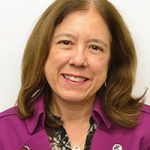
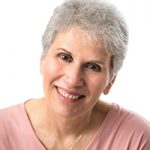
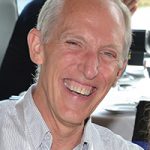
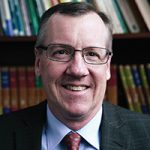
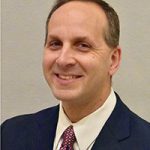
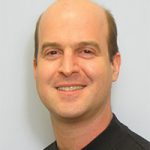
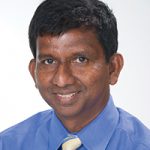
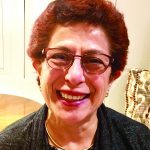









Wonderful candidates. I will only support Jeri Mulrow for ASA Presidemt. Bless all, Fritz
Wonderful Candidates. JerI Mulrow for Preosdent
Welcome!
Amstat News is the monthly membership magazine of the American Statistical Association, bringing you news and notices of the ASA, its chapters, its sections, and its members. Other departments in the magazine include announcements and news of upcoming meetings, continuing education courses, and statistics awards.
ASA HOME
Departments
Archives
ADVERTISERS
PROFESSIONAL OPPORTUNITIES
FDA
US Census Bureau
Software
STATA
QUOTABLE
“ My ASA friendships and partnerships are some of my most treasured, especially because the ASA has enabled me to work across many institutional boundaries and
with colleagues from many types of organizations.”
— Mark Daniel Ward
Editorial Staff
Managing Editor
Megan Murphy
Graphic Designers / Production Coordinators
Olivia Brown
Meg Ruyle
Communications Strategist
Val Nirala
Advertising Manager
Christina Bonner
Contributing Staff Members
Kim Gilliam